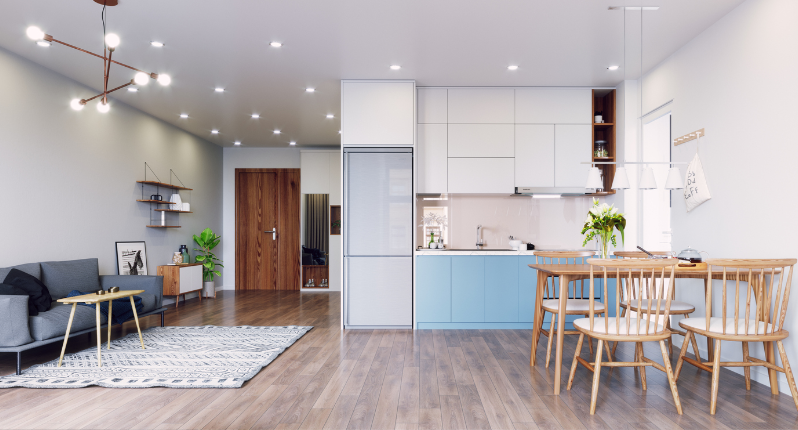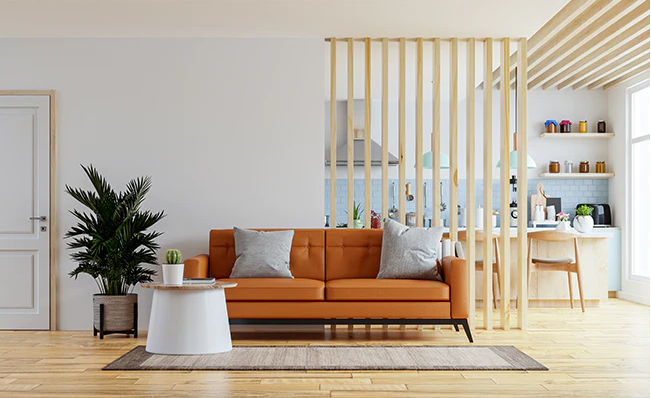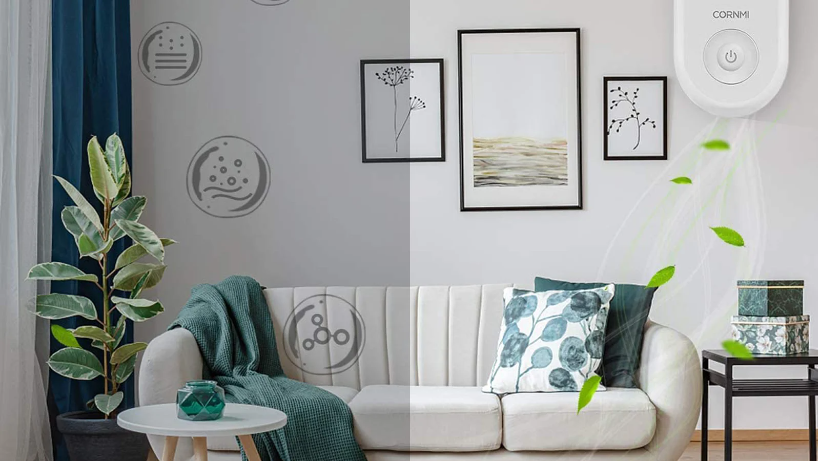The quality of air in your house cause a great impact on your health. Hence, an air purifier has become necessary for every household, but do I need a purifier in every room? If yes, then how to make a budget-friendly deal out of it? Well, this guide holds most of your answers, so let’s begin.
Do I need Purifier in every room?

Air purifiers have become immensely popular after Covid-19 as a gadget to improve indoor air quality by removing pollutants and dust allergens from the air.
People have started using an air purifier in their living rooms and bedrooms, but it is still unclear whether it is necessary for every room. Well, the precise answer is what type of air purifier you have as this will determine the power of the unit. So, let’s begin with the scratch from the types.
Types of Air purifiers
Here is a quick brief for every type so that you know which one of them you need.
- HEPA (High-Efficiency Particulate Air) Purifiers
HEPA air purifiers are the most popular and effective ones. They use a HEPA filter to trap pollutants like dust, pollen, and pet dander. They are the most commonly used filters in any air purifier due to their usability and efficiency of cleaning 99.97 % of microns.
However, you must maintain them regularly and change the HEPA filters every 6-12 months (non-washable), depending on your locality’s usage and air quality.
Continue to read about Washable HEPA Filters. For the best deals on HEPA Air Purifiers.
- Activated Carbon Purifiers
This type of air purifier use activated carbon filters to remove pollutants from the air. Activated carbon filters are particularly useful in removing odors, such as those caused by smoke, cooking, or pets.

They also absorb harmful chemicals and gasses that may be present in the air. Activated carbon filters typically last 3-6 months, depending on usage.
What to get, continue Activated Carbon Purifier
- UV (Ultraviolet) Purifier Filters
These filters work on the principle of eliminating bacteria and other viruses through UV light.
Such air purifiers are best for places where people are sensitive to infections, such as hospitals. UV purifiers are also effective in removing mold and mildew.
Unfortunately, ultraviolet purifiers do not remove dust particles from the air, so try to get an air purifier that uses it in combination.
For the best products, Air Purifiers with UV filters.
- Ionic Purifiers
Ionic air purifiers use an electrostatic charge to attract pollutants like dust, pollen, and smoke. The charged particles then stick to a collection plate inside the purifier, effectively removing them from the air. However, there are some controversies about Ionic air purifiers, such as they produce ozone, which can cause severe lung problems.
Continue for Ionic Air Purifier
- Ozone Generators
Ozone generators are controversial air purifiers that use ozone to kill bacteria and viruses. Ozone air purifiers generate ozone, harming humans and even more patients suffering from respiratory issues.
- Hybrid Purifiers
These are the most commonly used and preferred kinds of air purifiers. Hybrid air purifiers combine two or more technologies to remove pollutants from the air effectively. For example, some purifiers may combine HEPA filters with activated carbon filters to effectively remove particulate matter and odors from the air.
***
Now that you are sure about what filter to consider, the following factors to understand whether you need an air purifier in every room.
Why Do I need Purifier in every room? Factors to consider

Whether or not it is necessary to place an air purifier in every room is determined by some factors; otherwise, it costs you some bucks.
- What size is your room?
Size of the room matters the most when deciding whether a single unit will be enough or not. Usually, for larger rooms you will require a larger air purifier to remove pollutants from the air effectively, or in some cases 2 medium air purifier but it will be just an extra cost on your electricity and for the
If a room is small and airy, you don’t need an air purifier.
- Purpose of the room
The purpose of the room is also an important factor to consider.
For example, If your room is regularly used and there are many people visiting that room, you definitely need an air purifier in that room.
On the other hand, if your home has a guest room and it’s not used often, you don’t need any air purifier for that room.
- Level of pollution in the room
Another factor to consider is the level of pollution in the room. In case you live in a locality where industrial area is near, there is a lot of pollution in your area or even have a smoker in your room, it is important to have an air purifier installed to remove the bacteria and allergens from the air.
- Personal health concerns
Your personal health concerns are a really important factor while deciding the number of air purifiers in your room. This applies to the people who suffers from allergies, pollution, or are dealing with any respiratory issues.
Benefits of using an air purifier in every room
- Reduction of pollutants
Air Purifiers reduce the dust particles and allergens from the indoor air. The reduction of pollutants is the primary work of an air purifier.
- Improved air quality
Improved air quality is another benefit of using an air purifier in every room. Clean air can help to reduce respiratory issues, allergies, and asthma symptoms.
- Improved respiratory health
Improved respiratory health is another benefit of using an air purifier in every room.
Breathing the fresh and pollutants free air can help you to improve your lungs functions and it can keep you safe from respiratory infections.
- Better sleep
Better sleep is another benefit of using an air purifier in every room. Clean air can help to reduce snoring and improve sleep quality.
Possible Drawbacks of using an air purifier in every room
With all the benefits aside, putting air purifier in every room can be a pain too that might you have not though of before, here I am listing them for you.
- Cost
One of the main drawbacks drawback of using air purifiers in every room is the cost. Air purifiers can range in price from affordable to quite expensive, depending on the technology and features included.
Buying air purifiers for every room of your home can be impactful on your budget specifically if you are going for some high end models.
In addition, some air purifiers require regular filter replacements, which can also add to the overall cost over time. So, having an air purifier in every room of the home isn’t everyone’s cup of tea, especially for those struggling economically or with tight budgets. So It is really important to weigh whether using air purifiers in every room is necessary or will burden your budget.
- Maintenance
Maintenance is another potential drawback of using an air purifier in every room.
Air purifiers need to be maintained daily and on a monthly basis, such as cleaning the filter and changing the filter. So, increasing the number of purifiers means increasing the headache of maintaining them.
- Noise
Noise is another potential drawback of using an air purifier in every room. Some air purifiers can be loud and disruptive, especially at night. Moreover, if they have a high fan speed setting. So it might distract your attention during reading or may disturb your sleep.
D. Energy consumption
Energy consumption is another potential drawback of using an air purifier in every room. Air purifiers can use a lot of energy, which can increase your electricity bill.
Alternatives to using an air purifier in every room
Air purifier could be costly in some cases or for a specific reason, however, it is wise to limit the sources than to bear an additional cost even when one unit is already functioning.
Thus, to cope with it, here are some
- Natural Way to purify air
The best and most effective method is to use natural means for filtering the air such as adding plants. They are more likely to improve the air quality indoors by costing you only once.
Some of the best plants for improving indoor air quality include the snake, spider, and peace lily. These plants are easy to care for and can help to improve air quality naturally.
- Room-specific air purifiers
This means instead of placing a device in every room, consider locating it in a specific room with poor air quality. And for that, make sure to know the measurement of your room to get the right product and get the most out of it.
For example, you can use an air purifier in your office, kitchen, or TV lounge.
- Regular cleaning and ventilation
Regular cleaning and ventilation are also important alternatives to air purifiers in every room. Vacuuming and dusting regularly can help to remove pollutants from the air, while opening windows can help to improve ventilation and reduce the buildup of pollutants.
For more techniques, How to purify air without air purifier?
Conclusively, Do I need Purifier in every room?
In conclusion, using an air purifier in every room of your home can have many benefits for your health and respiration. Air purifiers can reduce the air pollutants such as dust, pollen, pet dander, smoke, and other allergens from the air, resulting in improved and fresh air to breathe.
This can be particularly beneficial for those with allergies or respiratory issues. As there are numerous air purifiers available in the market, it is really important to choose a purifier that is according to your room size and indoor air quality. Installing an air purifier in every room in your home can help you ensure that you and your family members breathe fresh and healthy air.
